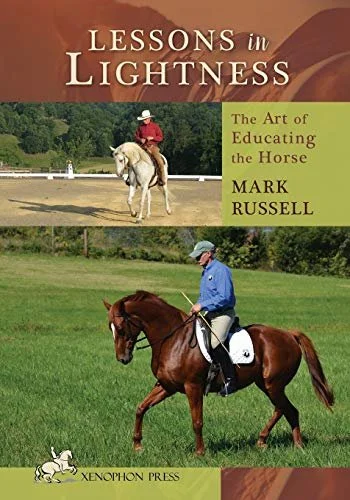“Lightness is not an alternative approach," writes horse trainer Mark Russell in the opening chapter of Lessons in Lightness. "Nor is it a 'style' or a clinician's way to deliver fast results. This book describes methods that have stood the test of time, albeit different from what is considered mainstream by today's competition-based performance trainers."
Russell traces his horse training lineage to the late riding master Nuno Oliveira, who in turn was a student of the 18th century theories of Francois Robichon de la Gueriniere and Francois Baucher in the 19th century.
They share a common belief in the importance of relaxation and suppleness in training to achieve lightness as opposed to the more precision-based style common to most competitive riding.
Based in Connecticut, Russell has developed a modern training system based on the classical riding gymnastic routines of his predecessors. This book describes his system step-by-step, showing riders how to educate their horses as well as learn from them.
Russell's system is divided into three phases, beginning with teaching the horse to relax and stretch with relative freedom from the rein. The second stage concentrates on riding the horse through the bit, followed by advanced schooling in transitions and exercises like the counter-canter and flying changes.
"I wrote this book about my methods and my program because riding in lightness works for both the horse and the rider," Russell explains. "Learning lightness opens the door to the art of riding."
